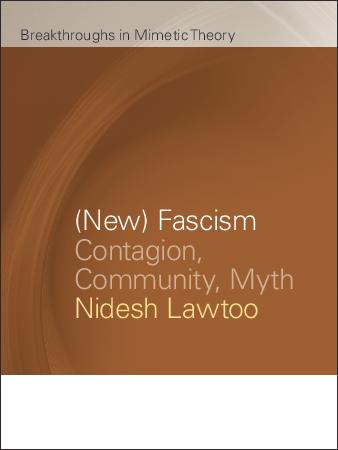In this seventh episode of HOM videos, German philosopher Gunter Gebauer (Free U of Berlin) discusses the role mimesis plays in sports, the origins of language, social distinction, crowd behavior, and the recent rise of hypermimetic behavior in the digital age, all of which paint a picture of homo mimeticus beyond good and evil.
Tag Archives: crowd psychology
Storming the Capitol: The Predictable Efficacy of (Hyper)Mimesis

How could a mimetic crowd go so easily from a conspiracy theory to a (new) fascist insurrection? In this piece for TCC Nidesh Lawtoo argues that what is surprising is not that the crowd hit the U.S. Capitol like a wave, but that no one in power saw this announced wave coming. If it is still unclear how (hyper)mimesis goes from conspiracy theory to (new) fascist actions, find out more here. Versione intervista in italiano per il CdT (con Carlo Silini): L’Assalto al Campidoglio.For related events on the importance to counter (new) fascism see also, Settima Lettera on Freud, Fascism, & Myth (March-June 2021); New Fascism & the Mimetic Unconscious (KU Leuven, Marc 24 ) New Fascisms, New Resistances (U Beragmo, 22-23 April)
Book launch of (New) Fascism (2019)
In conversation with Wojciech Kaftanski, Nidesh Lawtoo presents his last book, (New) Fascism (MSU P 2019) at the Institute of Philosophy (Husserl Archives, KU Leuven, October 2019). A diagnostic of crowd behavior, mythic identifications, and mimetic contagion constitutive of the growing shadow of fascism.
(New) Fascism: Contagion, Community, Myth
Fascism tends to be relegated to a dark chapter of European history, but what if new forms of fascism are currently returning to the forefront of the political scene? In (New) Fascism: Contagion, Community, Myth (August 1, 2019) Nidesh Lawtoo diagnoses the case of Trump to illustrate the (un)timeliness of Nietzsche’s claim that, one day, “‘actors,’ all kinds of actors, will be the real masters.” Preview and order here.
Review
“The book is a testament to the power of reasoning to unmask and resist cruel forms of affective contagion, even as it opens the door to the project of composing generous and laudable admixtures of pathos and logos. A bracing and elegant book very much worth reading.”
—JANE BENNETT, Professor, Department of Political Science, Johns Hopkins University, and author of Vibrant Matter: A Political Ecology of Things

